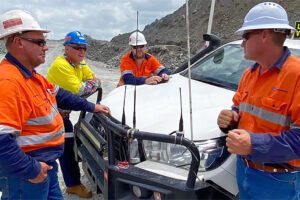A Safety Management System is supposed to be a systematic and proactive process for managing safety risks. Having a structured approach to safety management should complement and support good management, operational and human factors practices but the reality is usually very different.
What can we say about safety management systems in the real world?
- Safety Management Systems are usually large, complex and difficult to access for the very people they are designed for.
- The emphasis on process deflects focus away from safety risks.
- They largely exclude health and psychosocial health risks.
- Where behaviour is believed to be the main cause of accidents the safety management system aims to control the behaviour of people[1].
- Their effectiveness is questionable and there is a lack of evidence of outcomes.
- They are costly to build and maintain.
- Most don’t work as the only people who access them are the High Priests of Safety.
- Their application is supposed to encompass the whole organisation yet few workers would even be aware of its existence.
- The effectiveness of safety management systems over time must be questioned[2].
From this we can conclude that having a ‘good’ safety management system does not necessarily mean good safety[3].
So why do we have safety management systems? Could it be that a safety management system is simply a means to an end? For many organisations a Safety Management System has become a requisite to do business. Customers require evidence of a Safety Management System. They will not do business with organisations that do not have a systemised approach to managing safety.
In my organisation’s case it is a condition of our self-insurance licence is that we have an accredited Safety Management System. A structured and certified safety management system coupled with demonstrated performance in safety can also be a commercial value-add to any selling proposition.
In an ideal world there would be no need for a ‘safety management system’ as safety, alongside productivity, quality and cost would be an integrated subset of the overall work being performed. But unfortunately, safety is treated as a standalone discipline whether we like it or not. This starts with legislation and regulation, the requirement for documented and accredited systems and also the real world difficulty of having operational procedures incorporate all the elements of the safe system of work.
This creates a real barrier to the integration of safety into mainstream work practices. The safety management system needs to engage and involve lest the system become a white elephant. The problem is that despite being certified and fulfilling all regulatory and commercial requirements the system we have doesn’t achieve the desired levels of engagement and involvement. Our profession is partly to blame with people who should know better embracing the white elephant murmuring “my precious”.
But do we need a new safety management system? After all we have achieved an extraordinary level of performance with the existing one. Professor Sidney Dekker has a good answer. He says that “Safety actions taken in ultra-safe (near zero) organisations are often repetitions or retreads of those taken in a less safe organisation. They miss the point and do not help in creating additional safety”[4]. My view is that risks are still there, we haven’t eliminated them and to rely upon what we have done to go forward is analogous to Einstein’s definition of insanity[5]. Therefore the systems we have are not entirely fit for purpose, or as I like to tell my staff, “What got is here isn’t going to keep us here”.
Introducing the “Two Speed Safety System”
The greatest barrier to a safety system being used by anyone but the safety people in the organisation is its very size and complexity. Line managers and employees want simple and effective answers to questions and a clear understanding of process. This applies just as much to safety as it does every other activity. Yet often this information is buried in detailed, sometimes complex documents full of legal references and does not inform or promote safe work.
Yet is this necessary? To a certain extent, it is. What safety management systems tries to do is be all things to all people, and inevitably fails. Worse it borders on the ridiculous. A procedure for reversing a vehicle (because that’s how someone got killed) without a procedure for driving a vehicle (because we haven’t run over someone going in a forward direction… yet). So what should a safety management system relevant to the people who need it look like? Here are the criteria a non-safety person may consider important;
- It must be meaningful and useful to every worker.
- It must be accessible and easy to use.
- It must be simple and easily do-able.
- It must not, by its very size be a deterrent.
- It must use language understood by everyone.
Conversely, regulators and auditors want detailed, formal documents with operating procedures described in clinical detail. This leads to the creation of large, complex documents which unsurprisingly are rarely referred to by managers or workers. Yet we need both so what to do?
One approach may be two systems not one. We still need the formal system albeit in a more useful and accessible form. But the average manager or worker also needs tools they can use as well. So our primary system should be the formal safety management system which would be our ‘Slow Speed’ system. Then there would be another system which would be aimed at being quick and easy to use in every aspect of its use, the ‘Fast Speed’ system.
Simply put it is a ‘simple’ and ‘complex’ system running side by side. To make the ‘fast speed’ is to make every element of the system quick and easy. It means making our procedures real, relevant and applicable in a real world situation. Picture an app where the user can find out what needs to be done in a process in a short time and links with the elements which tells them about the risks faced and how to manage them. The ‘fast speed’ should touch every part of our system and make the interaction with users a quick and easy experience.
Applying these to the system and simplifying the experience will truly make our system more accessible and if it is used, has a better chance of keeping people safe. In the meantime the ‘slow’ speed system sits in the background and is only referred to when required.
We trialled this concept in my organisation 18 months ago. The ‘fast speed’ consists of a series of FAQ’s, abbreviated procedures translated into plain English, one pagers showing steps to take and a set of simple standards outlining our expectations and how to achieve them. This all resides within our intranet in a ‘one stop shop’.
For a population of approximately 8500 employees the site has been accessed over 23,000 times in the last year, the equivalent of nearly three hits per employee. It proves that people will access systems if they are accessible and the valuable messages buried in complex processes can be revealed where they can be of use.
Complexity in safety is not going to disappear overnight. But complexity where it is needed and simplicity where equally it is needed can both be stepping stones towards doing Safety Differently.
References:
[1] K. Frick & V. Kempa, Occupational Health& Safety Systems – When are they good for your health?, European Trade Union Institute, Brussels, 2011.2 Occupational Health and Safety Management Systems: A Review of their Effectiveness in Securing Healthy and Safe Workplaces, C. Gallagher, E. Underhill, M. Rimmer, National Occupational Health and Safety Commission, Canberra, 2001.
3 A. Hopkins, Lessons from Esso’s Gas Plant Explosion at Longford, Australian National University, Undated, www.futuremedia.com.au/docs/Lessons from Longford by Hopkins.pdf
4 S. Dekker, The Field Guide to Understanding ‘Human Error’, Third Edition, Ashgate, 2014, pp181.
5 Insanity: doing the same thing over and over again and expecting different results. Albert Einstein (attributed).
This article was contributed by Geoff Hoad.














Add Comment